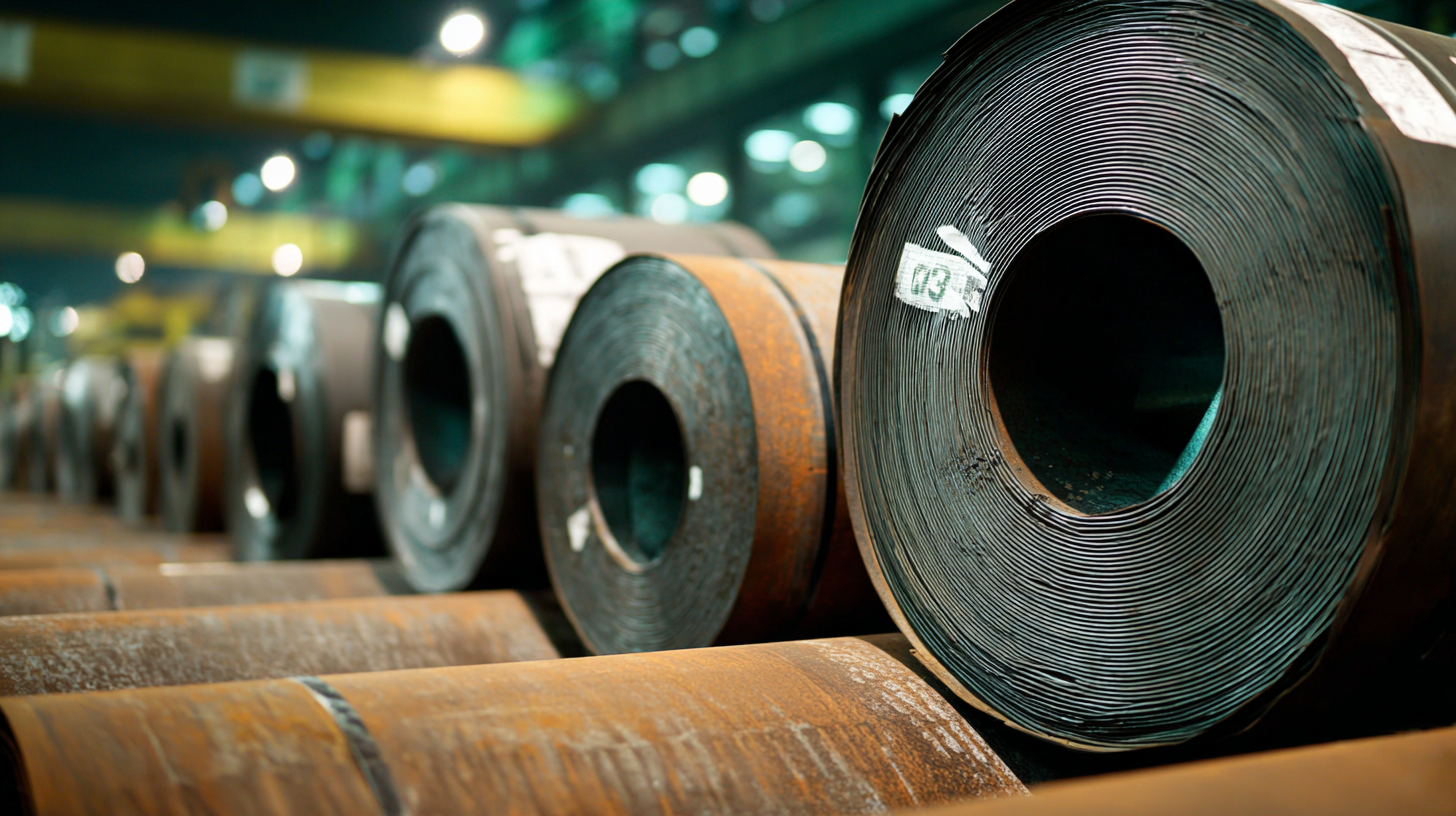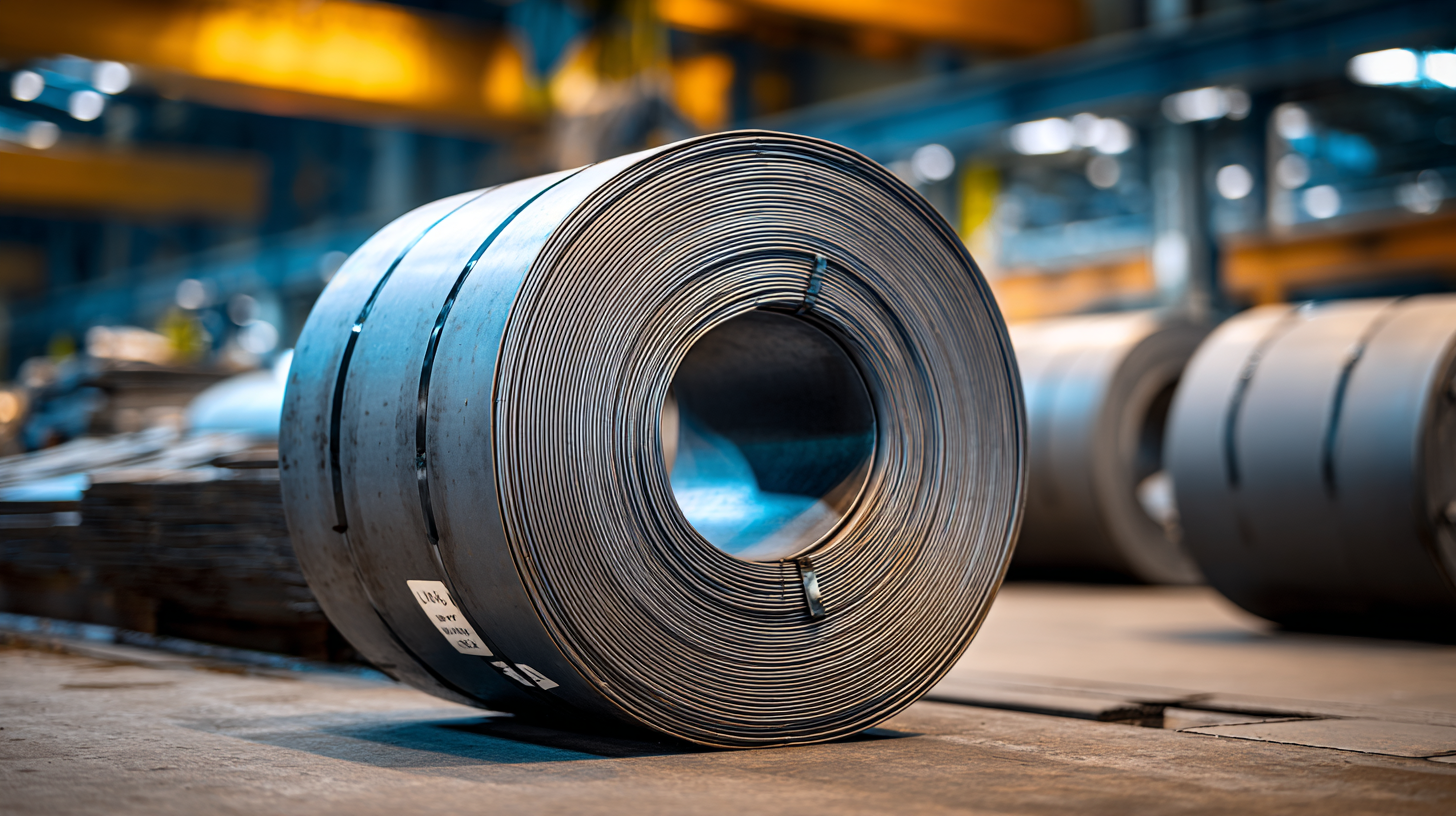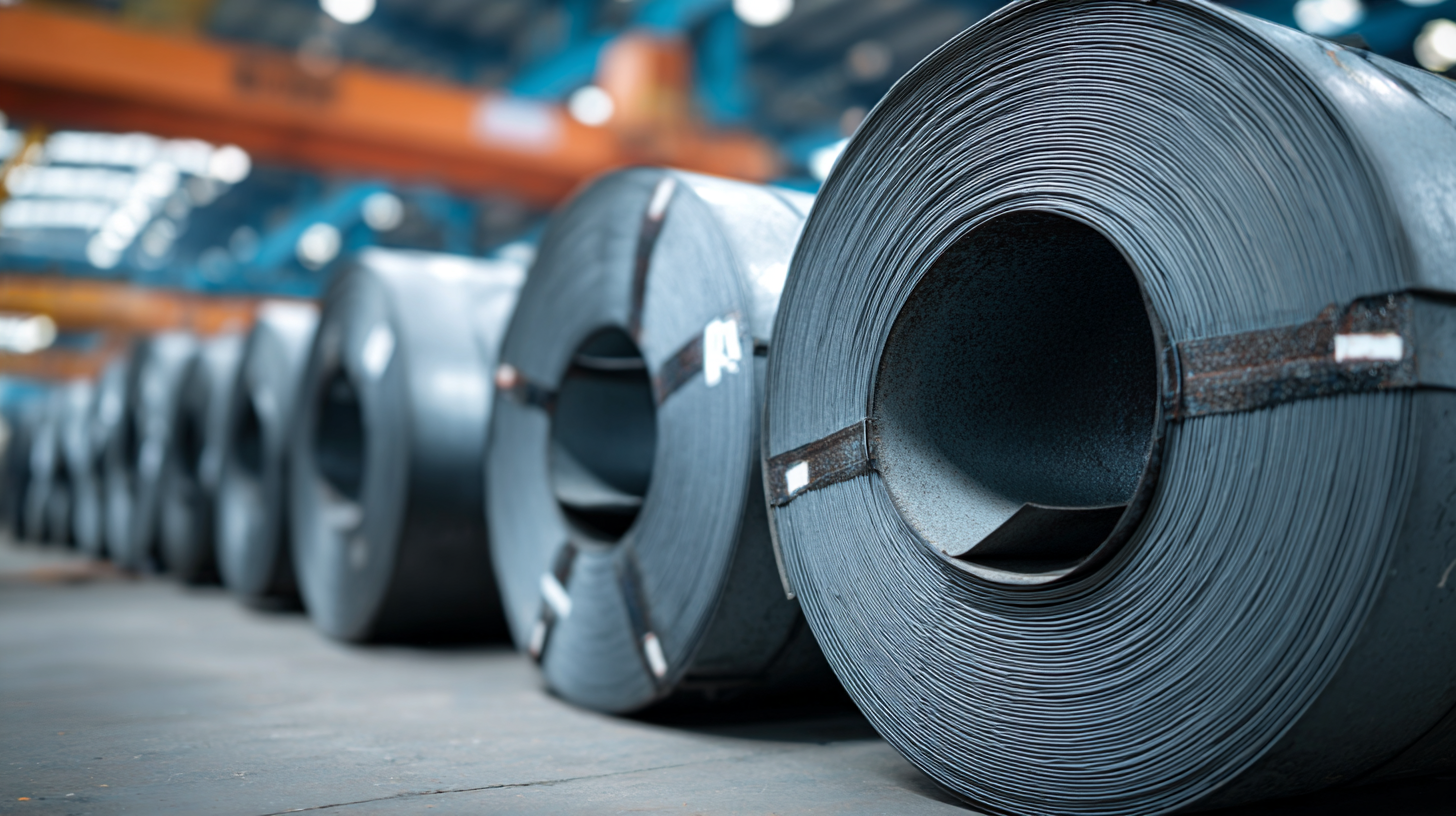The global steel market has experienced significant fluctuations, with the demand for Carbon Steel Hot Rolled Coil witnessing a steady surge. According to the World Steel Association, global crude steel production reached 1.88 billion metric tons in 2022, highlighting the critical role of carbon steel in various industries, particularly in construction and manufacturing.

As businesses expand their international trade operations, understanding the intricacies of import and export certifications becomes essential for ensuring compliance and optimizing supply chains. This comprehensive tutorial aims to provide insights and practical solutions for navigating the regulatory landscape surrounding Carbon Steel Hot Rolled Coil, effectively bridging the gap between industry standards and regional requirements.
By mastering these certifications, companies can not only enhance their market access but also contribute to sustainable development through responsible trading practices.
Carbon steel hot rolled coil is a versatile material widely utilized across various industries due to its unique characteristics. This type of steel is created through a rolling process where the steel is heated above its recrystallization temperature, allowing it to be easily manipulated into large sheets. The result is a product that boasts excellent strength and durability, making it ideal for applications in construction, automotive manufacturing, and heavy machinery. Its surface finish is typically rough, which may not be aesthetically pleasing but provides essential benefits in terms of strength and resistance to deformation.
In addition to its physical properties, carbon steel hot rolled coils exhibit a significant level of malleability. This feature enables it to be further processed into different shapes, such as beams, plates, and tubes, which are essential for various structural and fabrication projects. Furthermore, the cost-effectiveness of hot rolled coils makes them a preferred choice over other types of steel for large-scale applications.
Understanding these key characteristics helps industries select the right materials for their specific needs, ensuring both performance and efficiency in their operations.
When it comes to hot rolled coils, understanding the various grades of carbon steel is crucial for manufacturers and buyers alike. Carbon steel grades can be categorized under low, medium, and high carbon steel, each offering unique properties that cater to different industrial needs. Low carbon steel, with its high ductility and weldability, is commonly used for producing automotive parts and structural components. Conversely, medium carbon steel strikes a balance between strength and malleability, making it an ideal choice for applications like gear manufacturing and heavy-duty machinery.
High carbon steel, on the other hand, contains a higher carbon content, providing exceptional strength and hardness. This grade is typically used in high-stress applications such as cutting tools and high-wear components. Additionally, the composition of alloying elements, such as manganese and silicon, can further enhance the performance characteristics of the hot rolled coils. A thorough comparative analysis of these grades will help businesses select the appropriate carbon steel for their specific applications, optimizing both performance and cost-effectiveness in their production processes.
| Steel Grade | Yield Strength (MPa) | Tensile Strength (MPa) | Elongation (%) | Application |
|---|---|---|---|---|
| S235JR | 235 | 360-510 | 26 | Construction, Machinery |
| S355JR | 355 | 470-630 | 22 | Structural Steel Applications |
| S420MC | 420 | 500-700 | 20 | Heavy Machinery, Automotive |
| S690QL | 690 | 850-1000 | 18 | High Strength Structures |
When it comes to carbon steel products, regulatory standards and certification requirements play a crucial role in ensuring quality and safety in the supply chain. Companies involved in the manufacturing or distribution of carbon steel hot rolled coils must navigate a complex web of local, national, and international regulations. This includes compliance with standards such as ASTM (American Society for Testing and Materials) and ISO (International Organization for Standardization), which provide guidelines for material properties and quality control.
Achieving the necessary certifications can significantly enhance a company's reputation and marketability. Certifications such as CE marking in Europe or certification from the American Institute of Steel Construction (AISC) can assure customers that the products meet rigorous quality standards. Furthermore, understanding the specific requirements for documentation, testing procedures, and traceability is essential for maintaining compliance and avoiding costly penalties. By mastering these regulations, businesses can not only streamline their import and export processes but also build trust with clients and stakeholders in an increasingly competitive market.
When it comes to importing and exporting carbon steel hot rolled coils, understanding the certification process is crucial. Certifications not only ensure compliance with international standards but also enhance the credibility of your products in the global marketplace. It's essential to familiarize yourself with the specific certifications required in both the exporting and importing countries. Consulting with customs brokers and industry experts can provide valuable insights into the specific documentation needed, which varies by region and product type.

Tips: One effective practice is to keep an updated checklist of all necessary certifications, including mill test certificates, ISO standards, and compliance documents. This proactive approach minimizes delays and helps maintain a smooth flow of goods. Additionally, consider establishing strong relationships with suppliers and customers, as clear communication about certification requirements can prevent misunderstandings and facilitate quicker transactions.
Moreover, staying informed about regulatory changes is key. Customs regulations can change, affecting the import/export landscape for carbon steel hot rolled coils. Regularly review governmental trade websites and subscribe to industry newsletters to ensure you remain compliant. Being proactive in understanding these shifts can save time and costs down the line while securing your position in a competitive market.
As the demand for carbon steel hot rolled coils continues to grow globally, understanding the evolving landscape of certifications becomes paramount for industry players. The certifications for these products not only ensure compliance with international standards but also play a crucial role in enhancing product quality and customer satisfaction. With advancing technologies and stricter environmental regulations, the future of carbon steel hot rolled coil certifications is leaning towards more robust and transparent processes.
One significant trend is the increasing emphasis on sustainability and environmental responsibility. The steel industry is experiencing a shift towards certifications that focus on the carbon footprint and resource efficiency of production processes. As consumers become more environmentally conscious, certifications that verify eco-friendly practices will likely gain prevalence. Additionally, digital tools and blockchain technology are being explored to improve traceability and verification processes, ensuring that all stakeholders can confidently track the lifecycle of carbon steel products, from production to end-use. This evolution not only fosters greater trust among consumers but also paves the way for innovation within the industry.






